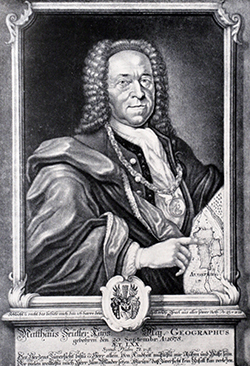Matthäus Seutter on:
[Wikipedia]
[Google]
[Amazon]
 Matthäus Seutter (20 September 1678
Matthäus Seutter (20 September 1678
 Matthäus Seutter (20 September 1678
Matthäus Seutter (20 September 1678 Augsburg
Augsburg ( , ; ; ) is a city in the Bavaria, Bavarian part of Swabia, Germany, around west of the Bavarian capital Munich. It is a College town, university town and the regional seat of the Swabia (administrative region), Swabia with a well ...
– March 1757 in Augsburg) was a German map
A map is a symbolic depiction of interrelationships, commonly spatial, between things within a space. A map may be annotated with text and graphics. Like any graphic, a map may be fixed to paper or other durable media, or may be displayed on ...
publisher
Publishing is the activities of making information, literature, music, software, and other content, physical or digital, available to the public for sale or free of charge. Traditionally, the term publishing refers to the creation and distribu ...
of the 18th century.
Biography
Seutter started his career as anapprentice
Apprenticeship is a system for training a potential new practitioners of a Tradesman, trade or profession with on-the-job training and often some accompanying study. Apprenticeships may also enable practitioners to gain a license to practice in ...
brewer
Brewing is the production of beer by steeping a starch source (commonly cereal grains, the most popular of which is barley) in water and fermenting the resulting sweet liquid with yeast. It may be done in a brewery by a commercial brewer, ...
. Apparently uninspired by the beer business, Seutter left his apprenticeship and moved to Nuremberg
Nuremberg (, ; ; in the local East Franconian dialect: ''Nämberch'' ) is the Franconia#Towns and cities, largest city in Franconia, the List of cities in Bavaria by population, second-largest city in the States of Germany, German state of Bav ...
where he apprenticed as an engraver under the tutelage of the prominent J. B. Homann. Sometime in the early 18th century Seutter left Homann to establish his own independent cartographic publishing firm in Augsburg
Augsburg ( , ; ; ) is a city in the Bavaria, Bavarian part of Swabia, Germany, around west of the Bavarian capital Munich. It is a College town, university town and the regional seat of the Swabia (administrative region), Swabia with a well ...
. Though he struggled in the early years of his independence, Seutter’s engraving skill and commitment to diversified map production eventually gained him a substantial following. Most of Seutter’s maps were heavily based upon, if not copies of, earlier work done by the Homann and Delisle firms.
By 1732 Seutter was honored by the German Emperor
The German Emperor (, ) was the official title of the head of state and Hereditary monarchy, hereditary ruler of the German Empire. A specifically chosen term, it was introduced with the 1 January 1871 constitution and lasted until the abdicati ...
Charles VI with the title of “Imperial Geographer”. Seutter continued to publish until his death, at the height of his career, in 1757.
The Seutter firm continued under Seutter’s son Albrecht Carl until his death in 1762. Following Albrecht’s death, the firm was divided between the established Probst firm and the emerging firm of Tobias Conrad Lotter.
Lotter, Matthäus Seutter’s son in law, was a master engraver and worked on behalf of the Seutter firm. Lotter would eventually become one of the most prominent cartographers of his day.
References
Sources
*Ritter, M. Seutter, Probst and Lotter: An Eighteenth-Century Map Publishing House in Germany., "Imago Mundi", Vol. 53, (2001), pp. 130–135.) {{DEFAULTSORT:Seutter, Matthaus 1647 births 1756 deaths 18th-century German cartographers Pictorial map artists Map publishing companies People from Augsburg